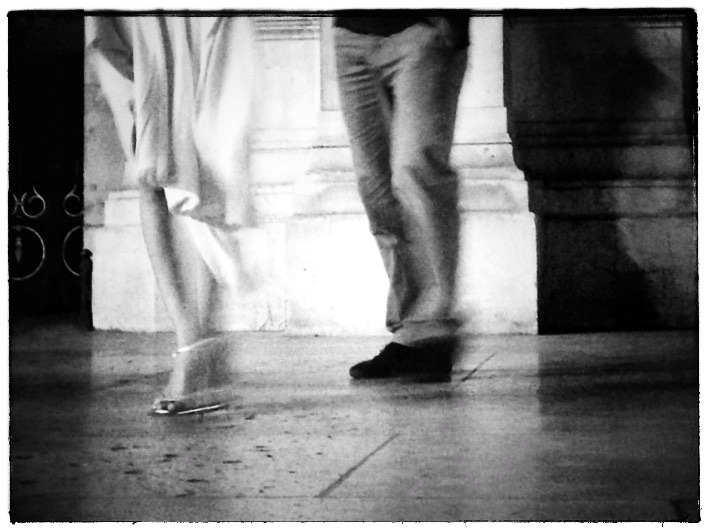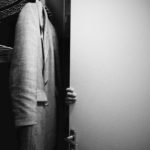Paris, late at night last September, tangueros are dancing on the plaza of Opera Garnier. It takes a second to stop. Then, time flies. Tango, the dance of love captured me, again… While I was taking photographs, an idea emerged. If reasons of Love resist to any understanding, would it be possible to identify the signs of its discourse as steps of dancers always appear to me – like a vibrant illustration of this intimate dialogue between lovers?

How is it possible to apprehend what love is? The mechanisms of love are a mystery… Raymond Carver, a fabulous American short stories teller wrote ‘What We Talk When We Talk About Love.’ With such a title, he might have found the best angle to approach what love is. Not love itself but what is involved in love… Also, Roland Barthes, a French philosopher tried in ‘Fragments d’un discours amoureux’ to analyse the language of love, elaborating, a kind of analytical board of its various figures as Dmitri Mendeleïev classified the chemical elements… According to Barthes, the discourse of love is highly ‘choreographic’ and he compares them to movements of dancers. Analyzing this discourse, he called the logic of the reason and applied it to the things of heart. It seems to be a seductive way to find some kind of answers to this mystery. ‘Tangueros’ series tries to take its part in that wondering quest.
…
Tango is easy to be seduced by. The body language of this dance and its music are certainly very powerful, even if it would be easy to confess this is a personal belief coming from its practice… The colors of Tango are black and red, and nobody ignores that red roses have thorns too. Each step of this dance could be the last one. It is a dialogue converging to a climax. Even if one of the dancers is supposed to have the lead in this conversation, any of the dancers is free to stop its course for a moment, introducing a new step to this sparring verbal. That’s how the dance occurs. In that way, Tango steps are really close to the figures Barthes identified. Re-reading ‘Fragments d’un discours amoureux’ while editing the photographs of this series was like growing evidence… This series of steps was like some of the loved ones.
…

* This shy distance of the very first steps when dancing is not already in question.

* This precarious balance after, what is not yet a couple, starts dancing. Dancers need these steps to know each other.

* The mistaken steps, and how the dancers need to adjust their movements when in doubt about the meaning of dancing together, are still in the air.

* This impossible try to let it die, inspired by this primitive fear of being hurt. How thrilled it is to hold on to, despite of it. How sweet it is too, to quiet each other in this need of trying, at least, just trying.

* The very first dancing steps. They are not perfect but something is happening and it’s already taking both of them beyond words.

* How this new grammar of steps provides the energy to give and ask for more that they might think at the very first sight. Sensations don’t allow them to think any more – steps are coming from something deeper.

* The need to take a break, just like birds on a wire. It goes too fast and finding breath to articulate is difficult. Suddenly, fear and blossom of dancing are intimately melted.

* These moments of grace where feelings can only be expressed with free movements, just like an air of bandoneon. Imagination took its part in this earned and sublimed trust, coming from previous steps.

* There is a belief in this balance which seems perfect. One move and the other is able to finish the sequenced steps the first dancer suggested. Intimacy is pushed to its limits in what seems a perfect match: bodies are vibrating, hearts are beating strongly and minds are filled with pure sensation. For the time of a dance, bodies and souls are extended to a kind of eternity as if this moment had to last for ever.

…
Steps and signs. Step by step, a grammar of these signs is enlightened: its subjects, its objects, its sequenced sentences, its rhythms, its breaths and its poetry. Unless what it is about remained a whole mystery. Photography captures moments; images are like signs of living love, living lives. Photography is itself a grammar helping us to approach deepest mysteries as close as we can. As a photographer, it is a never ending dance…
L. Bird, Paris, December 2016.
You can find her on : Instagram | Website
About Author
Latest stories
 LadybirdFebruary 3, 2018‘In my next life, I want to be a cat’
LadybirdFebruary 3, 2018‘In my next life, I want to be a cat’ LadybirdJanuary 13, 2017Tangueros. A Lovers discourse by L. Bird
LadybirdJanuary 13, 2017Tangueros. A Lovers discourse by L. Bird LadybirdJune 8, 2016April In Paris – by L. Bird
LadybirdJune 8, 2016April In Paris – by L. Bird



This article made me want to dance. Wonderful!